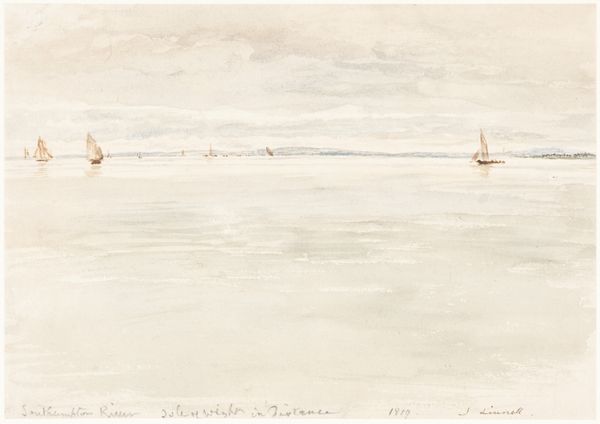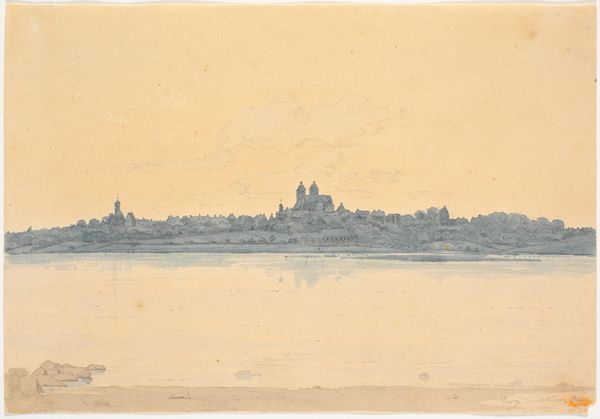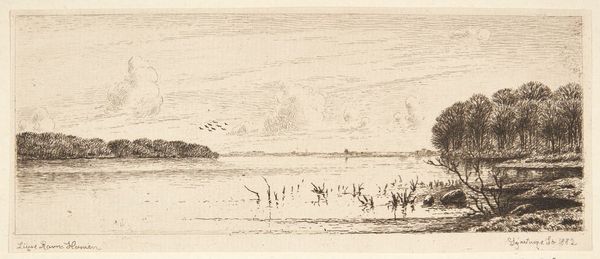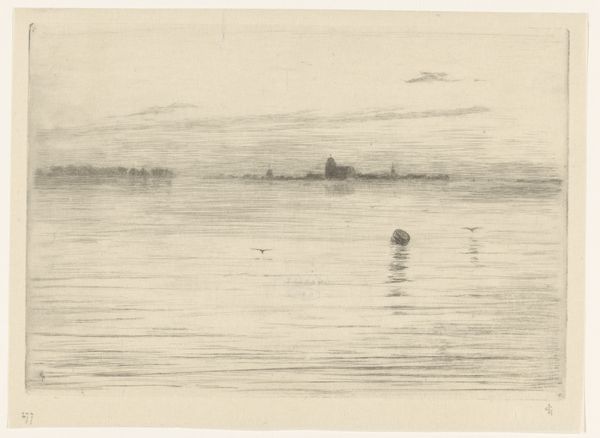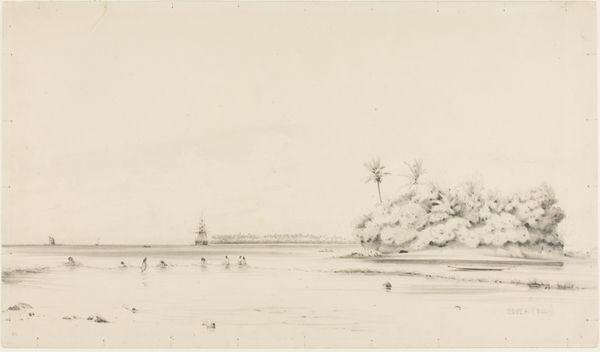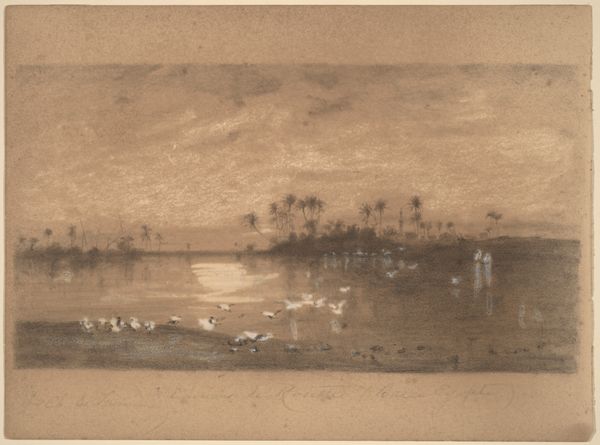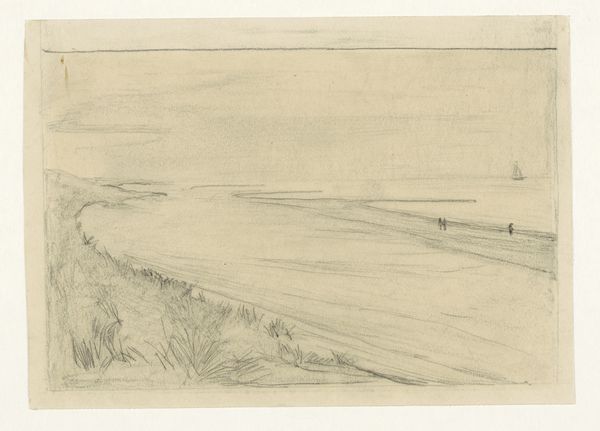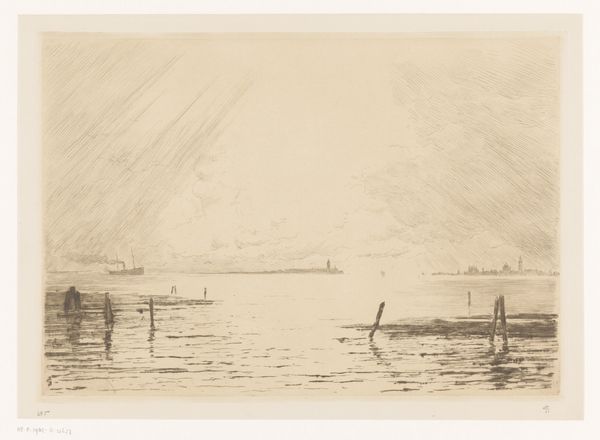
Dimensions: 126 mm (height) x 333 mm (width) (bladmaal)
Editor: Here we have P.C. Skovgaard’s “Venice, viewed from the lagoon,” created between 1854 and 1855. It's a watercolor drawing that feels almost ethereal, capturing the city from a distance. What’s interesting is how the water takes up so much space compared to Venice itself. What stands out to you? Curator: I immediately think of the plein-air technique. Skovgaard's choice to work outdoors, directly confronting the Venetian landscape, reflects a shift in artistic production. The material constraints – the portability of watercolor, the time spent capturing a fleeting moment – are crucial. What does it mean to represent Venice, a place steeped in history and commerce, through the readily available, quickly applied medium of watercolor? Editor: That's a great point! So the medium itself, being relatively inexpensive and quick, impacts how he represents a powerful place? Curator: Precisely. It challenges traditional notions of grand, laborious history painting. Furthermore, consider the role of travel. Who had access to Venice in the 1850s? Skovgaard's journey and artistic practice reflect a certain level of privilege and the burgeoning tourism industry. Editor: It almost democratizes the depiction of Venice, but within a limited social circle. So it’s less about pure aesthetics and more about who has the means to access and depict this iconic city, and how. Curator: Exactly. The watercolor becomes a commodity itself, both in its production and consumption. What impact does this have on our reading of "Venice" as a subject, do you think? Editor: This makes me think about how the light touch of watercolor belies a deeper engagement with social dynamics! Curator: And with the very act of seeing, capturing, and then disseminating an image of a place transformed into a brand through art production.
Comments
No comments
Be the first to comment and join the conversation on the ultimate creative platform.
